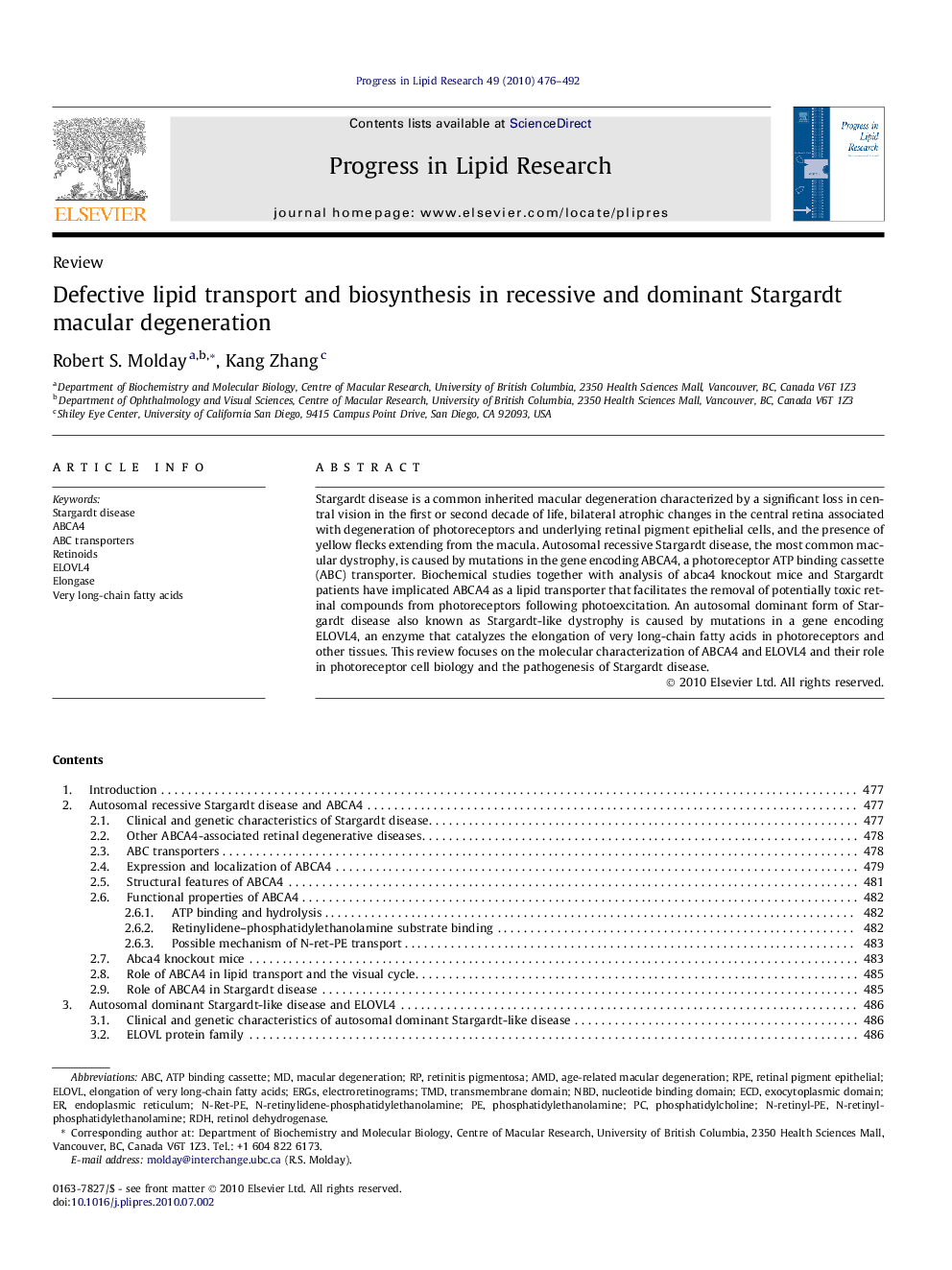| Article ID | Journal | Published Year | Pages | File Type |
|---|---|---|---|---|
| 2019221 | Progress in Lipid Research | 2010 | 17 Pages |
Stargardt disease is a common inherited macular degeneration characterized by a significant loss in central vision in the first or second decade of life, bilateral atrophic changes in the central retina associated with degeneration of photoreceptors and underlying retinal pigment epithelial cells, and the presence of yellow flecks extending from the macula. Autosomal recessive Stargardt disease, the most common macular dystrophy, is caused by mutations in the gene encoding ABCA4, a photoreceptor ATP binding cassette (ABC) transporter. Biochemical studies together with analysis of abca4 knockout mice and Stargardt patients have implicated ABCA4 as a lipid transporter that facilitates the removal of potentially toxic retinal compounds from photoreceptors following photoexcitation. An autosomal dominant form of Stargardt disease also known as Stargardt-like dystrophy is caused by mutations in a gene encoding ELOVL4, an enzyme that catalyzes the elongation of very long-chain fatty acids in photoreceptors and other tissues. This review focuses on the molecular characterization of ABCA4 and ELOVL4 and their role in photoreceptor cell biology and the pathogenesis of Stargardt disease.
